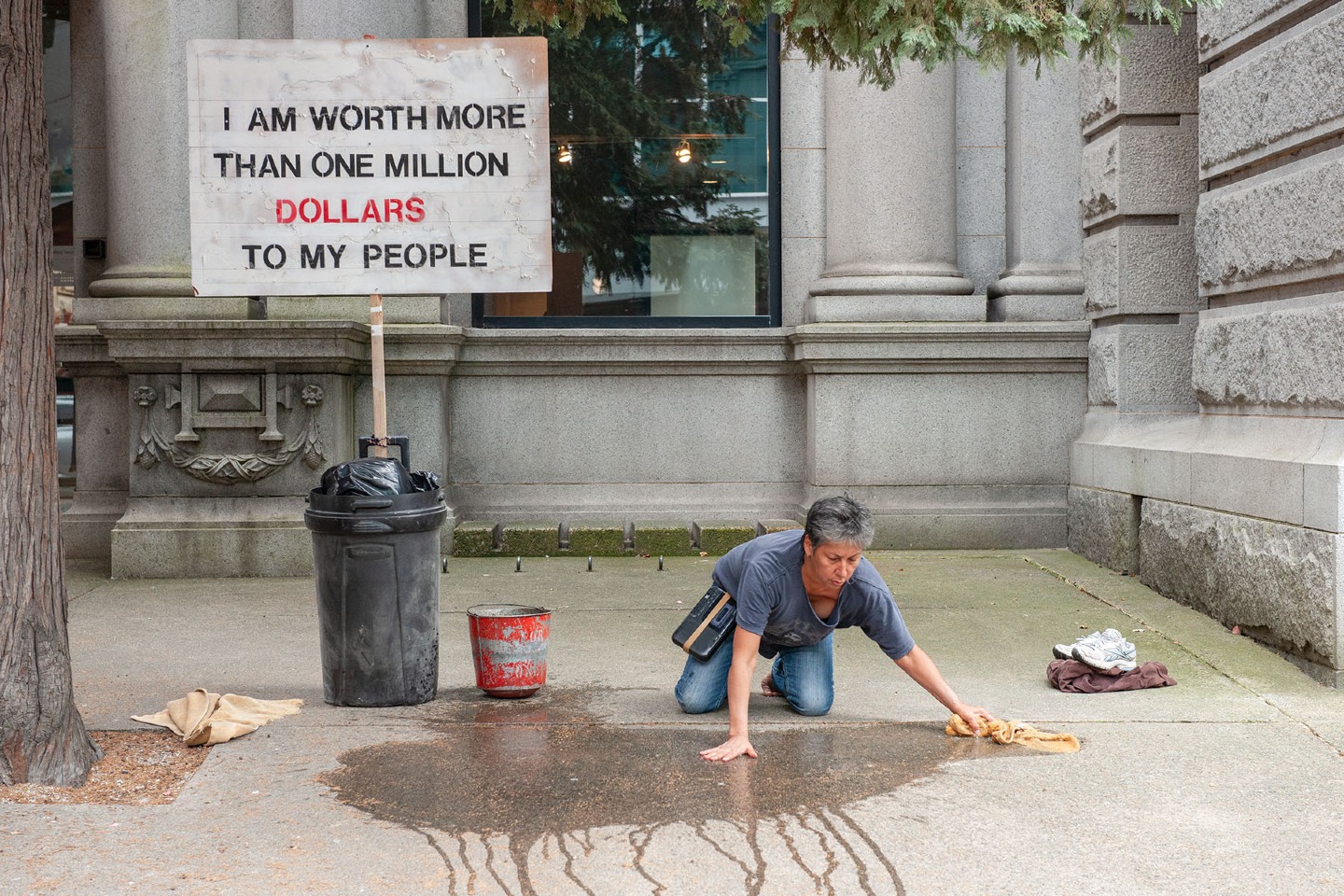Exhibition runs April 19 – June 22, 2013
Opening Reception: Friday, April 19 from 6-8 pm
Artists: Jonathas de Andrade, Sven Augustijnen, Alejandro Cesarco, Tamara Henderson, Gareth James, Henrik Olesen, Willem de Rooij, Natascha Sadr Haghighian, and Florian Zeyfang
Curated by Fionn Meade.
http://www.midwayart.org/index.php
Midway Contemporary Art
527 Second Avenue Southeast
Minneapolis, Minnesota 55414
phone 612-605-4504
facsimile 612-605-4538
The group exhibition Plaisance engages contemporary artistic practices that move in and out of ethnographic framing, countering progressive and predominant codes of representation by inhabiting a secondary register of historical erasures, seeming blankness, and aphasic or amnesiac gaps within cultural memory. Giving living form, color, and voice to a resistant uncanny, Plaisance redirects affective forms of visibility and legibility to trouble political signification, referentiality, and presumed narratives of historiography.
While the exhibition’s title echoes the popular entertainments and mimetic objects of fleeting desire associated with pleasantries, distractions, and trifling objects, it also evokes a more archaic understanding of plaisance as a place affording contemplation alongside a prevailing architecture—not unlike the garden pavilion or Folie structures of eighteenth century leisure. Within the exhibition at Midway,plaisance becomes a place of rupture and reorganized looking that engenders thick descriptions of gesture, object, and image, enacting an intricacy of distinctions over the sweep of generalizing abstractions.
Sven Augustijnen’s Les Demoiselles de Bruxelles series, 2008, for example, portrays African prostitutes in self-selected night poses in the streets of Brussels, framed in dialectical tension with parallel nighttime images of monuments, buildings, and interiors that trace remnants of King Leopold II’s exploitative reign and Belgium’s colonial past held over into an uneasy present tense. A book of the same title extends Augustijnen’s exploration to coincident unravelings, including the irony that streetwalkers should work the Avenue Louise commemorating Leopold’s mother while Karl Marx penned the Manifesto of the Communist Partyunder threat of imminent exile blocks away. The dispersed subject of Henrik Olesen’s A.T., 2012, meanwhile, orbits around British mathematician Alan Turing (1912-1954). Lauded as a patriot for his wartime code-breaking and seminal computing innovations, Turing’s later punishment for being homosexual included forced hormone treatments, leading to what Olesen has described as a loss of body, and his ultimate suicide. A composite portrait composed of text, collage, and quotations, A.T. reveals unified historical subjects to be the normative and coercive fictions they are.
In Natascha Sadr Hagighian’s The Microscope, 2006, it is the eyepiece of the titular apparatus that gets examined and inverted. Wryly replaced with a speaker emitting a vocoder version of the pop song Every Breath You Take, the resulting lilt of Sadr Haghighian’s vision machine is accompanied by an adjacent booklet chronicling her conversation with Evelyn Fox-Keller, professor of History and Philosophy of Science at MIT and author of The Biological Gaze. Together they analyze the semiotic sway over our everyday retinal intake and customary looking. A different step-by-step adjustment and illusionistic breakdown animates the referential impasse of Willem de Rooij’s five-part abstract weaving Silver to Gold, 2009/2011, wherein a gradual manipulation of machined linen transitions from silver to gold. Enacting a refusal of staid terms of abstraction or symbolic value, the large-scale textile panels readily absorb all surface light while deflecting signification. Subtle and exact in its literal gradation, Silver to Gold is an incisive yet withholding companion when compared to the intricate flower bouquet works often shown alongside de Rooij’s textile spectrums.
An effacement of a more archival impulse propels Gareth James’ photographic collages and provides a transition to works on view in Midway’s adjoining library.Untitled (Young Claude Lévi-Strauss with Monkey, Fragment Spirals), 2011, for example, imposes a collaged interpretation of an unexplained pedagogical diagram embedded in a late photograph of the Marxist philosopher Louis Althusser. Excerpting an untethered symbol made by a thinker who decried the possibility of any epistemological coherence in postwar culture, James superimposes the oscillating image onto a photograph of a young Claude Lévi-Strauss, taken at the time of writing Tristes Tropiques, his groundbreaking anthropological travelogue of time spent in the Amazon basin and Brazil. As with Olesen’s prying apart and laying bare the fictions of biographical representation, James lets the lost diagram of Althusser’s recalcitrant formulation obscure and darken the figure of assumed methodological authority and innovation in Lévi-Strauss.
In the here and elsewhere of Tamara Henderson’s film Neon Figure, 2013, the irrational takes recombinant form in the “tourist night” of a collapse and build scenography that savors the absence of analytic consciousness, while Jonathas de Andrade’s 4,000 Shots, 2010, uses a roll of Super-8 film to obsessively capture anonymous male faces in the streets of Buenos Aires, compressing frame by frame an aphasic climate of imminent disappearance and historical depletion. In contrast, a re-presenting of pose and encoded gesture is given further amplitude in the territorial maneuvers of Alejandro Cesarco’s Broodthaers, 2008, which succinctly adapts and recasts a mixed utterance of warning and defiance, even as Florian Zeyfang’s Introduction to a Small History of Photography – Formalist Heady Pattern Version, 2008, revisits the books and embedded images that inspired Walter Benjamin’s 1931 essay, Kleine Geschichte der Photographie, adapting the speculative register of Benjamin’s experimental montage form to locate a renewed oversensitivity within today’s inscribed and increasingly pervasive image literacy.
Accompanied by an exhibition catalog, Plaisance further explores the continued relevance of such concepts as “secondary explanation,” originally formulated by anthropologist Franz Boas, and will consider how the genealogical imperative active within such artistic practices contributes to an articulation of ethnographic framing as a history of the present.
– Fionn Meade
Photo: Untitled (Young Claude Lévi-Strauss with Monkey, Fragment Spirals), 2011
Chromogenic print
30 x 20 inches (76.2 x 50.8 cm)

